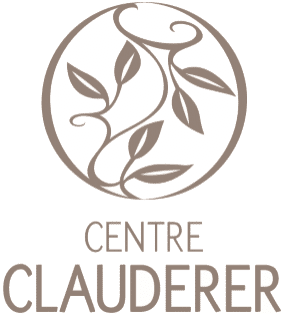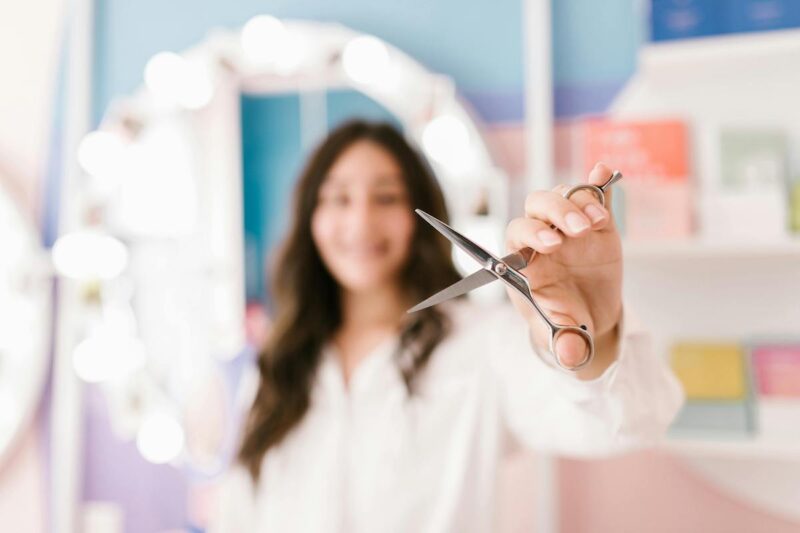Getting your hair cut regularly may seem counter-intuitive if you want dense, long hair, but in reality, a few scissor cuts can help you keep or regain a healthy head of hair.
For many of us, sporting a long, shiny, silky mane is the height of femininity, a guaranteed glamour asset. We all dream of it, but the reality is often far from our expectations.
Is your hair breaking, lacking shine, becoming dull and thinning, and feeling like it's stopped growing? Are you noticing a lack of volume and hair that's becoming drier and drier despite the care you give it? These are warning signs that your hair is not doing well. Maybe it's time to make an appointment with your favourite hairdresser for a trim!
Let's take a look at the benefits of a haircut - just a few centimetres are enough - to protect our lengths, which have been weakened by hot blow-drying, destructive straightening, repeated chemical colouring, or inappropriate hair care and other cosmetic manipulations that damage the beauty of our beloved locks.
A reminder: The life cycle of hair
For the record, hair growth is governed by an unchanging cycle. This is true whether you're a woman or a man, and whatever your hair type (Afro or mixed race, Caucasian, Asian, etc.). Hair is generated by the hair follicle. It takes around 4 months for each hair to reach the scalp. The hair life cycle is made up of 3 successive phases:
- anagen (growth for about 3 years in men, up to about 7 years in women),
- catagen (stagnation for a few weeks)
- telogen (the hair gradually detaches from the hair follicle, dying and falling out after a few months).
Hair grows from its roots, so the tip is the oldest part of the hair. Knowing that hair grows at a rate of around 1 cm to 1.5 cm per month (a little less in the case of afro or frizzy hair), it's easy to see that a woman's hair that falls to the small of her back reaches the venerable age of around 7 years at the tips.
What are the signs that your hair needs a trim?
Cutting your hair is essential if :
There is an increased loss of "small hairs". Very often, these are not complete hairs (with the bulb) but "just" pieces of hair. In other words, it's breakage rather than loss. The hair is weakened and has breakage points, i.e. places where the keratin is even weaker. This happens in particular :
- by frequent and repeated cosmetic manipulations that wear down the hair fibre. This includes cosmetic actions such as straightening, which cause lasting damage to the hair, since the chemical products applied are very aggressive and can even destroy the very structure of the hair.
- Another source of keratin weakening: chemical colours applied to the ends of the hair, when it is recommended that touch-ups should only be carried out on the first few centimetres of growth.
- Brushing and straightening with irons or brushes at excessive heat attacks the hair fibre, causing split ends. And split ends are sick hair. Once the scales have opened, the hair is dull. It is rough because light cannot reflect off a damaged cuticle. And open scales mean hair that no longer retains the nutrients essential to its good health and lacks moisture: it becomes dry, brittle and dehydrated.
- be careful with daily hairstyles, too, when you tie your hair back with an elastic band that shears the hair fibre in the same place, day after day
- hair becomes too dry despite the repairing treatments (moisturising masks, protective oils) we apply to it: unsuitable hair products (beware of coconut oil or henna, which are false friends), a random or even non-existent hair routine, an environment that is harmful to hair hydration, such as working in an air-conditioned environment, external pollution. Once again, it's the tips that suffer most from dehydration
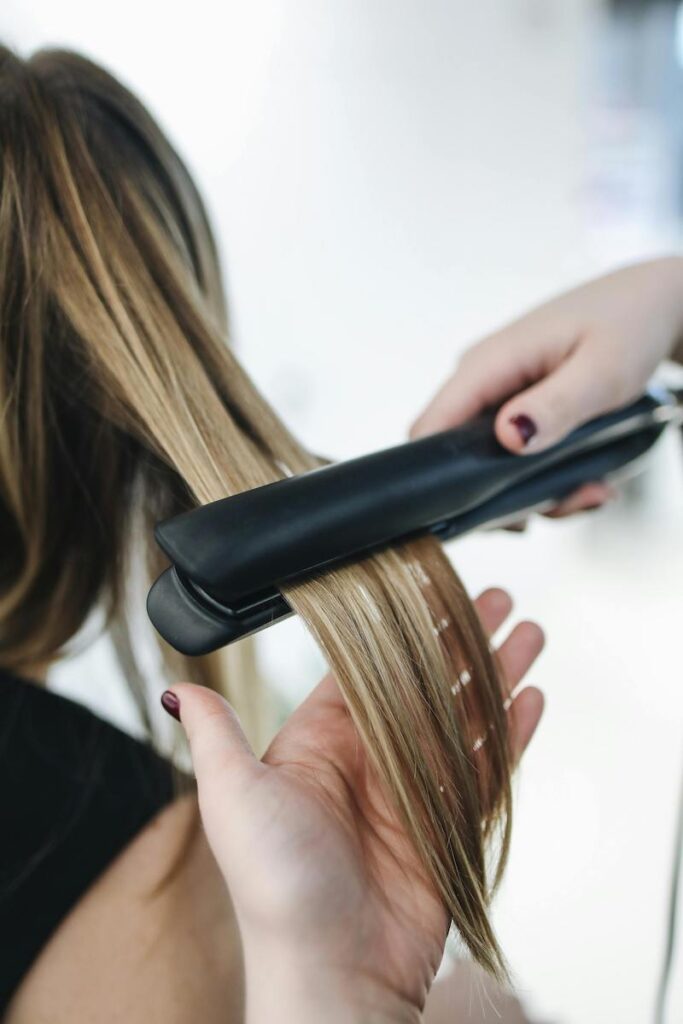
The hair fibre is fragile: let's take care of it!
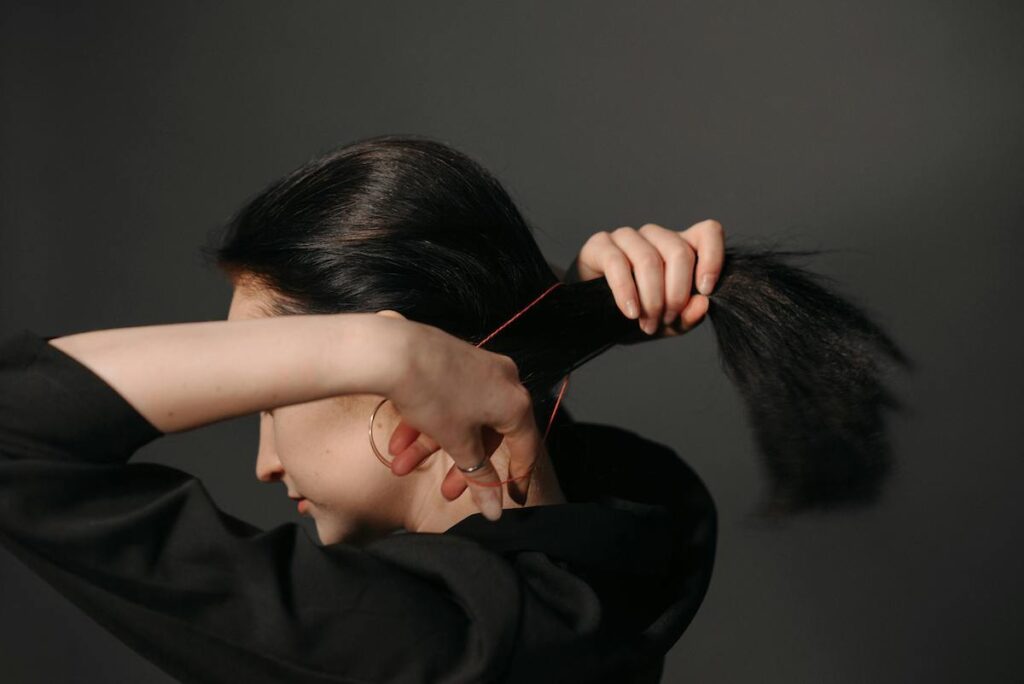

Consequences for the hair fibre : loss of density and flabby hair because it loses volume (breakage thins the overall mass), dehydration strips it of all plumpness, leaving it dull and limp.
What benefits can you expect from a haircut?
For a start, your spirits will be lifted! There's nothing like being pampered by the expert hands of your hairdresser! Trust your hairdresser to find the cut that will immediately give style and volume to your thinning hair. No more hair blues!
Above all, technically, cutting the ends means eliminating the most damaged parts of the hair. It's not a question of cutting everything off, but simply of shortening the hair by a few centimetres.
How often should you cut your hair? Obviously, everything depends on the initial length of the hair and the hairstyle chosen. If you haven't opted for a very short haircut, an appointment every 3-4 months is enough to remove the damaged ends and restructure the hairstyle by removing a maximum of 2-3 cm with a few deft strokes of the scissors.
By regularly removing the last few damaged centimetres, you can keep your hair healthy. You'll also prevent split ends and split ends from 'creeping up' and further accelerating the deterioration and thinning of your hair. It's better to have hair that's shorter but in good health than poor lengths that are thinned out over several centimetres, making your hair look dull and unkempt, especially if it's already naturally fine. Not to mention that the relative weight of each hair plays a part in hair loss - even if, of course, a hair only weighs a few micrograms, the longer it is, the 'heavier' it is, and the more it can be dragged along.
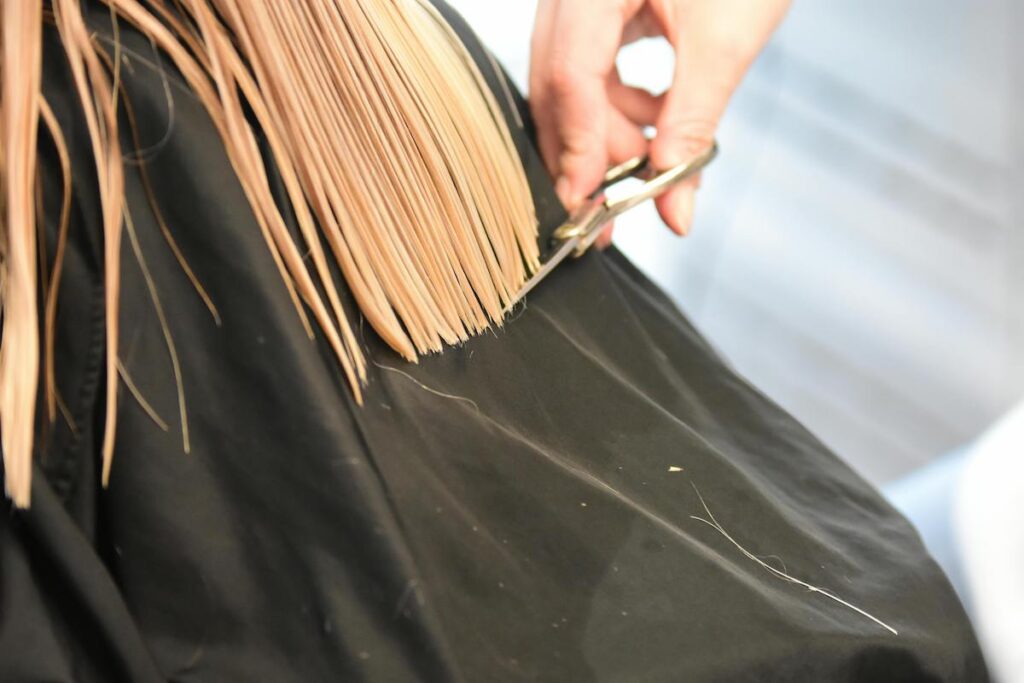
Cutting your hair a few centimetres 2 or 3 times a year is enough
Think about it The longer your hair is, the more it may look like it's falling out, especially if it's dark: 10 short hairs are less impressive than 5 long ones in the shower tray, so think before you stress.
Once the ends have been removed, all that's left is healthy, manageable hair with closed scales and a soft, smooth, silky appearance. All that remains is to offer hair care products adapted to its texture and problems to keep it looking healthy for as long as possible.
On the other hand, there's no point in believing that hair grows back faster if you cut it - regardless of when you cut it (forget the myth of the miracle haircut during the full moon!): hair is programmed with its own growth speed . It can be short or long, but it grows at the same speed from its hair follicle. You can stimulate hair growth by taking care of your scalp with specific massages that will stimulate blood circulation (it's through blood flow that essential nutrients are delivered to the hair follicle) and facilitate micro-circulation, not forgetting the relaxing aspect of the massage. Well-nourished hair follicles can produce hair in top condition. It will still grow at the same rate, but it will be stronger. Healthy hair is strong, shiny and supple from root to tip.
Finally, getting a haircut can be seen as an integral part of a well-thought-out hair routine. As well as using cosmetic treatments tailored to your hair type and the needs of your scalp, getting rid of split ends and damaged lengths means prolonging the life of your hair and encouraging healthy, vigorous regrowth.
